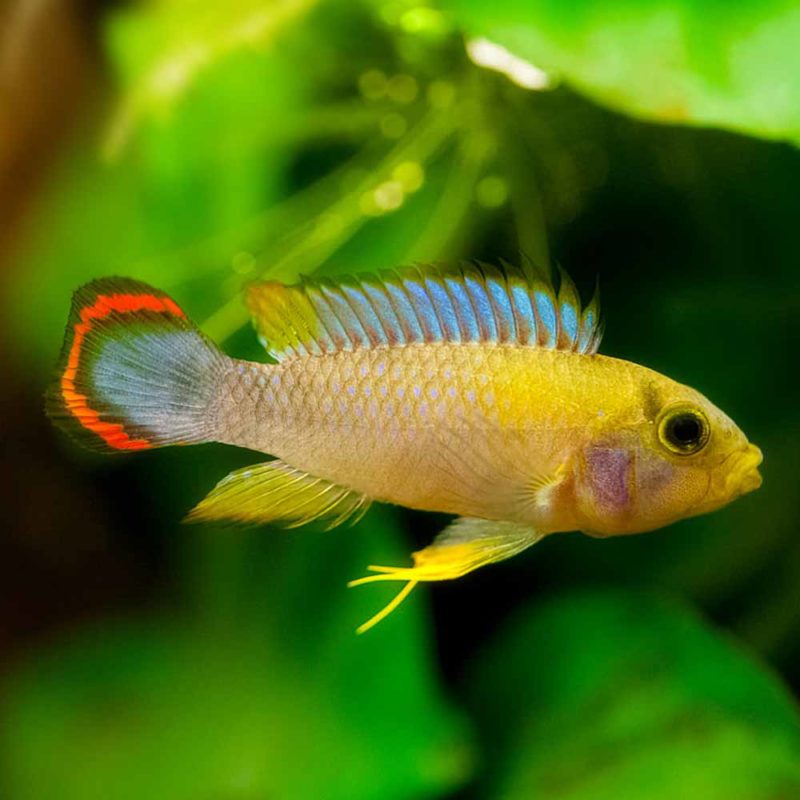Panda Dwarf Cichlid
The Blue Panda Dwarf Cichlid, also known as Apistogramma panduro/pandurini, is a beautiful and fascinating fish that has captured the attention of aquarium enthusiasts worldwide. This stunning species of fish is known for its unique appearance, intelligent behavior, and impressive coloration. In this post, we will explore the world of the Blue Panda Dwarf Cichlid and discover everything you need to know about caring for this amazing fish.
Pain Points related to Panda Dwarf Cichlid
Despite their captivating charm, Panda Dwarf Cichlids can be challenging to care for, which can lead to frustration and disappointment for both the fish and its owner. These fish require specific water conditions and a carefully curated environment to thrive, and any deviation from these conditions can result in illness, disease, and death. Additionally, they are sensitive to changes in water quality and can be prone to bacterial and fungal infections.
Target of Panda Dwarf Cichlid
The target of the Blue Panda Dwarf Cichlid is anyone who is interested in keeping a unique and beautiful fish species in their aquarium. These fish are perfect for both novice and experienced aquarium enthusiasts alike, as long as they are willing to put in the work required to care for them properly.
Summary of Main Points
In summary, the Blue Panda Dwarf Cichlid is a fascinating and captivating fish that requires specific water conditions and a carefully curated environment to thrive. While they can be challenging to care for, they are well worth the effort for anyone looking to add a unique and beautiful species to their aquarium.
A Personal Experience with Panda Dwarf Cichlid
I first discovered the Blue Panda Dwarf Cichlid several years ago while browsing through my local fish store. I was immediately drawn to their stunning coloration and unique appearance, and I knew that I had to add them to my aquarium. After doing plenty of research and setting up the proper environment for them, I was thrilled to watch their intelligent behavior and distinct personalities unfold.
The Blue Panda Dwarf Cichlid is truly a remarkable species of fish, and I highly recommend them to anyone looking to add a touch of beauty and uniqueness to their aquarium.
Tips for Caring for Panda Dwarf Cichlid
To give your Blue Panda Dwarf Cichlid the best possible care, it is essential to create a stress-free environment that mimics their natural habitat. These fish require soft water with a pH between 5.0 and 7.0, temperatures between 72°F and 82°F, and plenty of hiding spots and vegetation to explore.
Additionally, it is crucial to maintain high water quality by performing regular water changes and monitoring the water parameters for any variations. By providing a comfortable and secure environment for your Blue Panda Dwarf Cichlid, you can ensure that they remain healthy and happy in your aquarium for years to come.
Question and Answer Section
Q: Can Blue Panda Dwarf Cichlids coexist with other fish species?
A: Yes, they can coexist with other peaceful community fish species that have similar water requirements. Avoid keeping them with larger or more aggressive species, as they can become stressed and territorial.
Q: What do Blue Panda Dwarf Cichlids eat?
A: These fish are omnivores and enjoy a varied diet consisting of high-quality pellets, flakes, frozen or live foods, and vegetables. It is essential to feed them a balanced diet to maintain their overall health and vitality.
Q: Do Blue Panda Dwarf Cichlids require a specific type of substrate?
A: Yes, they prefer soft and acidic substrates such as river sand or leaf litter, as this mimics their natural environment and provides them with hiding spots.
Q: Are Blue Panda Dwarf Cichlids suitable for beginners?
A: While they can be challenging to care for, they are suitable for both novice and experienced aquarium enthusiasts as long as they are willing to put in the work required to care for them properly.
Conclusion of Panda Dwarf Cichlid
The Blue Panda Dwarf Cichlid is a stunning and unique species of fish that requires specific care to thrive. By providing them with a stress-free environment, high water quality, and a balanced diet, you can ensure that they remain healthy and happy in your aquarium for years to come.
Gallery
Blue Panda Dwarf Cichlid (Apistogramma Panduro/pandurini) - Aquatic

Photo Credit by: bing.com / panda cichlid blue dwarf apistogramma panduro
Blue Panda Dwarf Cichlid (Apistogramma Panduro/pandurini) - Aquatic

Photo Credit by: bing.com / panda cichlid blue dwarf apistogramma panduro
Blue Panda Dwarf Cichlid (Apistogramma Panduro/pandurini) - Aquatic Arts

Photo Credit by: bing.com / dwarf cichlid apistogramma panduro bred tank nano
Blue Panda Dwarf Cichlid (Apistogramma Panduro/pandurini) - Aquatic

Photo Credit by: bing.com / panda cichlid dwarf blue apistogramma panduro
Blue Panda Dwarf Cichlid (Apistogramma Panduro) - McMerwe

Photo Credit by: bing.com / apistogramma panduro cichlid dwarf mcmerwe